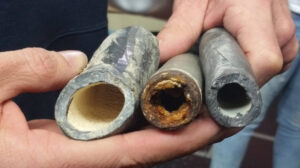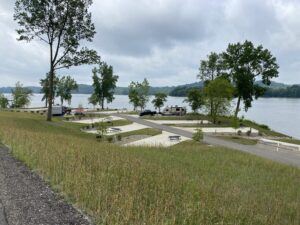
INDUSTRY TRENDS
Landscape Architecture and Football’s Life Lessons
October 9, 2017 | WRITTEN BY: Carmen
By: Travis Mathews, PLA, ASLA, LEED-AP, Director of Institutional Services
As a young boy growing up in the suburbs of Frederick, Maryland, I struggled in school. Reading, writing and arithmetic were concepts my young and developing brain could not comprehend. Through much of elementary school and middle school I was always several steps behind my peers academically. I required a lot of intervention and professional tutoring in attempts to keep pace and I felt extremely self-conscious and I lacked confidence.
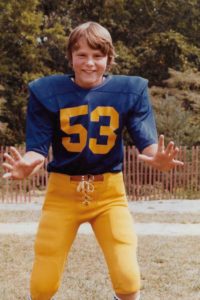
When I was 10 years old, my father asked me if I wanted to play tackle football in the newly formed league that was being developed across town. You see, for me, my body and physical abilities seemed to be advancing at a much faster rate than my brain so I was thrilled at the opportunity to do something that perhaps I could be good at. I played football from that day forward until I was 21 years old. At an early age, football provided me with an outlet to regain confidence in myself and acquire the discipline needed to push through the academic challenges that I was facing. After high school, I got invited to walk-on and play strong safety at West Virginia University. By that time, I had long overcome my childhood learning disabilities and I credit football with teaching me how to manage adversity and to never stop trying. In 1994, I earned my Bachelors of Science degree in Landscape Architecture and started my 23-year journey as a design professional, the last 12 of which at Environmental Design Group.
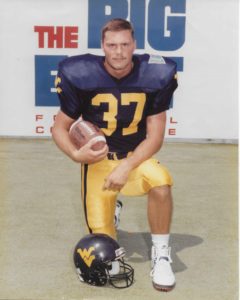
Here are just a few things the game has given me that I apply to my personal and professional life:
- How to finish something you start. That first year I played football, I wanted to quit after every game. I wasn’t used to getting planted on my back by a kid bigger and stronger than me and quite frankly that bruised my delicate ego. “I’ll just quit!” I remember saying…but my father wouldn’t allow it. A former football player and military veteran, he would say, “You made a commitment to your team when you signed up and you’re not quitting on them.” I learned very quickly that I had two options…one, keep getting beat up for the rest of the season or two, keep trying to improve and learn the fundamentals of the game. By the end of the season, I loved the game and was getting better and better every day. That never would have happened if I’d simply given up and walked away. Oddly enough, I found myself in the very same position when at the age of 18, I showed up as an invited walk on at West Virginia University’s training camp…but now even the little guys were knocking me to the turf. I refused to quit and I learned how to compete with players that were bigger, stronger, faster, and overall better athletes than myself. I was not a standout at WVU but my tenacity and “finish what you start” mentality allowed me to capture the attention of the coaching staff and earn a place on the roster and as a starter on Special Teams. My work ethic both on the field and in the classroom ultimately earned me a full scholarship. As a landscape architect, I’m always learning and trying to get better at what I do. Sometimes I get knocked on my back by the competition and other times it’s our team that finishes first.
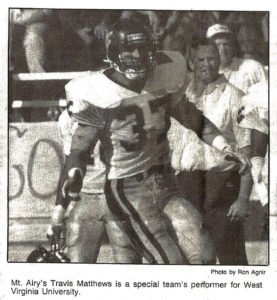
- How to deal with adversity. “Everyone has a plan until you get punched in the mouth!” Although I’m not a big fan of Mike Tyson, this famous quote paints a clear picture of what every football player must deal with…adversity. In life, as is in business, we like to carefully plan everything out and feel like we know exactly what the outcome is going to be. That is until we face a little adversity. A project runs into a roadblock, we overlook an important detail, schedules and budgets get compressed, an unforeseen condition throws the project in a tailspin and puts everyone’s eyes on your team to fix the problem. We’ve all been there…what now? Do we regroup and move forward or do we give up, complain about everyone else not doing their job, and simply fold it in? That’s when we find out what our true character is and football teaches us that we must press forward and endure. We must maintain our composure, ambition and a drive to succeed. Our prior circumstances only provide us with challenges for our next steps and you learn that very quickly on the playing field, and in a corporate atmosphere.
- How to lead. There’s an entire industry focused on providing professionals leadership training. Companies pay for leadership training for their employees and CEO’s pay to learn how to lead themselves and their companies. Go to any high school football game on a Friday night and you’ll see your share of leaders encouraging their team to stay positive and focused when the score isn’t in their favor and motivating them to give it their all and push themselves to be better. Leadership is learned and in football its learned early. As a landscape architect, we are asked to lead complex design projects and work on diverse teams. Having the ability to lead people and bring them along with you as part of the design and decision making process is crucial to what we do.
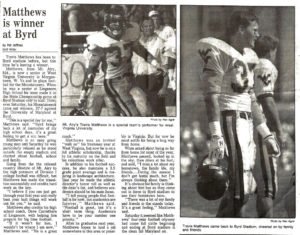
- How to follow. Before you can lead you must know how to follow. You should observe how other leaders lead. How they inspire and motivate people. How they deal with difficulty and change. How they know when to step aside and let others contribute their talents and expertise toward the endeavor that is being pursued. Leadership is rare, but everyone needs to know how to follow and trust the abilities and expertise of your teammates. At Environmental Design Group, we work on complex projects that require a diversity of professional skillsets to accomplish our clients goals. Much like a football team, we depend on our teammates and their special talents to help the team achieve the outcomes our clients desire, and often require us to step aside and allow other team members to lead and leverage their expertise to contribute to the overall success of the team.
- How to accomplish something bigger than yourself. Football is a team sport. You win as a team, you lose as a team. You depend on your teammates to do their job and trust they’ve got your back. So much of what we do in life revolves around teams. Whether it’s working toward a successful marriage, raising children or working collaboratively with co-workers on an important project, one thing is certain, to be successful, the team must have a common goal and a common purpose. There cannot be any hidden agendas or massive egos that will stand in the way of the team succeeding. I’ve seen firsthand athletes with tremendous skill and talent falter because the team was not cohesive and working together. Transversely, I’ve been on teams where the players were not quite as skillful, yet were highly successful because they all shared a common goal and worked unselfishly because the team needed them. As a landscape architect that puts a lot of emphasis on design, I have to be very purposeful in not letting my ego and personal vision impede the creativeness and problem-solving abilities of the team. I am fortunate enough to work with a group of bright and imaginative people who each have unique ideas and perspectives. Their combined talents and expertise far exceed mine so by working together we’re able to do some amazing things.
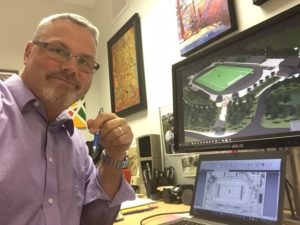
Eleven years of football cost me a fractured arm, cracked ribs, broken nose, several broken fingers and countless other sprains, bumps and bruises. I’ve played on winning teams and losing teams. I was on an 11-0 WVU team that played in a college football national championship game against Notre Dame in 1989 and I had to deal with the humiliation of walking off the field after a winless season in 1980.
Throughout the good and bad, I wouldn’t trade any of my experiences for anything in this world. There is indeed such a thing as “life outside of football” and I consider myself one of the fortunate few who have been exposed to football’s life lessons. Although I will never again strap on a helmet and shoulder pads and experience the adrenaline rush of running into a stadium filled with cheering football fans, the experiences and perspectives of playing the game have been profound for me. They have helped shape the person I am and have translated well throughout my career as a landscape architect. Today, instead of impacting running backs, I help to impact communities – and that’s pretty darn cool!
RELATED TAGS:
[xyz-ips snippet=”comment-form”]


